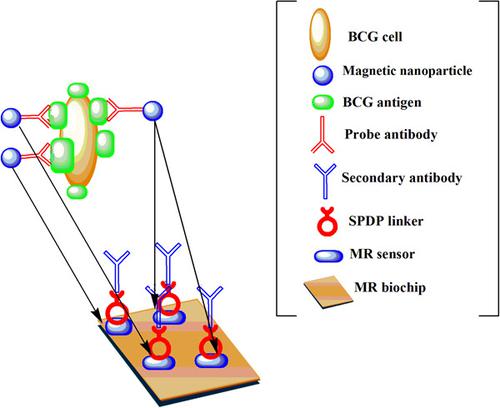当前位置:
X-MOL 学术
›
J. Cell. Physiol.
›
论文详情
Our official English website, www.x-mol.net, welcomes your feedback! (Note: you will need to create a separate account there.)
The overview and perspectives of biosensors and Mycobacterium tuberculosis: A systematic review.
Journal of Cellular Physiology ( IF 5.6 ) Pub Date : 2020-09-15 , DOI: 10.1002/jcp.30007 Kobra Salimiyan Rizi 1 , Ehsan Aryan 1 , Zahra Meshkat 1 , Golnaz Ranjbar 2 , Mojtaba Sankian 3 , Kiarash Ghazvini 1 , Hadi Farsiani 1 , Hamid R Pourianfar 4 , Majid Rezayi 5, 6
Journal of Cellular Physiology ( IF 5.6 ) Pub Date : 2020-09-15 , DOI: 10.1002/jcp.30007 Kobra Salimiyan Rizi 1 , Ehsan Aryan 1 , Zahra Meshkat 1 , Golnaz Ranjbar 2 , Mojtaba Sankian 3 , Kiarash Ghazvini 1 , Hadi Farsiani 1 , Hamid R Pourianfar 4 , Majid Rezayi 5, 6
Affiliation

|
Tuberculosis (TB) is referred to as a “consumption” or phthisis, which has been a fatal human disease for thousands of years. Mycobacterium tuberculosis (M. tb) might have been responsible for the death of more humans than any other bacterial pathogens. Therefore, the rapid diagnosis of this bacterial infection plays a pivotal role in the timely and appropriate treatment of the patients, as well as the prevention of disease spread. More than 98% of TB cases are reported in developing countries, and due to the lack of well‐equipped and specialized diagnostic laboratories, development of effective diagnostic methods based on biosensors is essential for this bacterium. In this review, original articles published in English were retrieved from multiple databases, such as PubMed, Scopus, Google Scholar, Science Direct, and Cochrane Library during January 2010–October 2019. In addition, the reference lists of the articles were also searched. Among 109 electronically searched citations, 42 articles met the inclusion criteria. The highest potential and wide usage of biosensors for the diagnosis of M. tb and its drug resistance belonged to DNA electrochemical biosensors (isoniazid and rifampin strains). Use of biosensors is expanding for the detection of resistant strains of anti‐TB antibiotics with high sensitivity and accuracy, while the speed of these sensory methods is considered essential as well. Furthermore, the lowest limit of detection (0.9 fg/ml) from an electrochemical DNA biosensor was based on graphene‐modified iron‐oxide chitosan hybrid deposited on fluorine tin oxide for the MPT64 antigen target. According to the results, the most common methods used for M. tb detection include acid‐fast staining, cultivation, and polymerase chain reaction (PCR). Although molecular techniques (e.g., PCR and real‐time PCR) are rapid and sensitive, they require sophisticated laboratory and apparatuses, as well as skilled personnel and expertise in the commentary of the results. Biosensors are fast, valid, and cost‐efficient diagnostic method, and the improvement of their quality is of paramount importance in resource‐constrained settings.
更新日期:2020-09-15

























 京公网安备 11010802027423号
京公网安备 11010802027423号